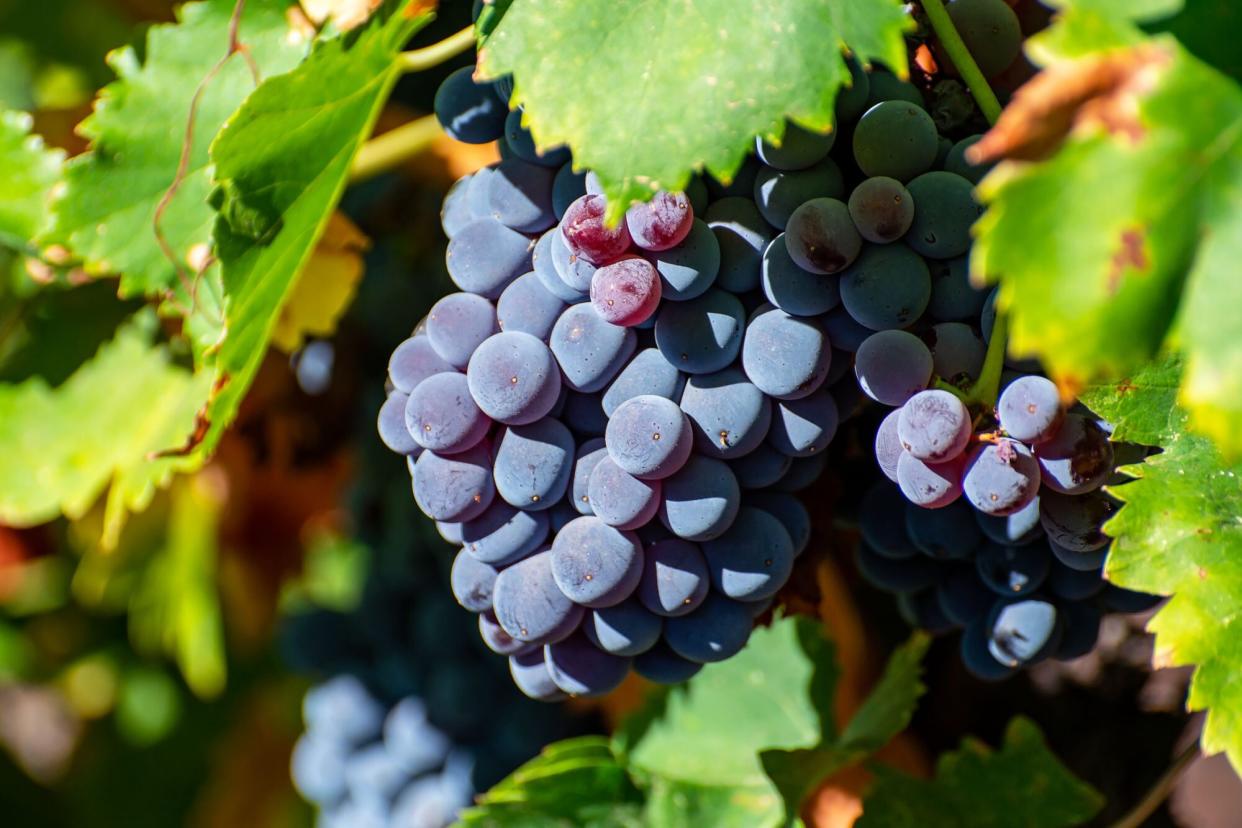Everything You Need to Know About Carignan

Getty Images
In most of the wine world, Carignan flies relatively under the radar. Still, the grape variety is one of the more important players of Southern France and Spain, even though better known grape varieties get more attention. When grown with care and not over-cropped, Carignan can produce wines of presence, structure, and spice. To fully appreciate its contribution to wines across the price spectrum, check out our Carignan wine guide below.
What Is Carignan Wine?
Carignan is a grape variety that, according to the renowned wine writer and critic Jancis Robinson, "was the single most common vine variety planted in … France until it was overtaken by Merlot at the end of the 20th century, [and] most wine drinkers have never heard of it." But that doesn't mean that it deserves to remain that way. Carignan, after all, offers the significant advantage of producing a substantial amount of fruit in the vineyard, which means more wine from the winery. In the world of wine, there is often an inversely proportional relationship between volume and quality, but the ranks of producers who are crafting well-made Carignan are growing.
Where Does Carignan Wine Come From?
Carignan is primarily produced in France, Spain, Italy, and the United States. Its most well-known expressions come from Southern France, especially throughout the Languedoc - Roussillon, where it is made into a single-varietal wine and blended with better known grapes like Syrah, Grenache, and Mourvedre. The grape is called Cariñena and Carinyena in Spain, where it is used to delicious effect either on its own or, notably, in the age-worthy blends of the Priorat region.
In Rioja, where it goes by the name Mazuelo, it's usually employed to supplement the Tempranillo and Garnacha that dominate. In Italy, Carignan produces increasingly important wines in the Carignano del Sulcis DOC (Denominazione d'Origine Controllata) of Sardinia. In the United States, producers in Mendocino are crafting some excellent examples of Carignane. (That added e on the end is typical of the American spelling of the grape variety.) And in Chile, Carignan is becoming quite popular in Maule. Also look for well-made examples from Israel.
Why Should You Drink Carignan Wine?
In a world of wine-grape abundance — excellent wines are produced from countless grape varieties— it would be unfortunate to only drink the same wines, produced from the same familiar ones. Carignan offers a break from that.
In fact, if the affordable, food-friendly bottles from Southern France are part of your wine life, or if rosés from that part of the country are a key component of your summertime, then you've probably already experienced Carignan, at least in a blend. There, it is often used to lend acidity, spice, and red fruit to wines that typically rely more heavily on Syrah, Grenache, and Mourvedre, though there are some excellent single-varietal bottlings as well. Alongside foods that are rich in fat and protein, it's delicious.
Carignan, no matter where it's from, tends to be a versatile addition to a meal: Its elevated acidity and moderate tannins allow it to cut through fat and partner with protein but not dominate, and its subtle sizzle of spice brings an added layer to the foods it's enjoyed with. And because Carignan is so generally productive in the vineyard, prices for good ones — whether single varietal or in blends — tend to be more than fair.
What Does Carignan Taste Like?
Carignan tasting notes often reference red-berry flavors, woodsy and savory spices, and subtle earthiness. When produced as a rosé, Carignan can also be remarkably fresh and energetic, with a seam of spice livening up flavors of cherries and raspberries.
Five Great Carignan Wines
There are many great Carignan wines on the market today. These five producers, listed alphabetically, are a perfect place to start exploring Carignan.
Porter Creek Old Vine Carignane
This highly respected Carignane from Mendocino is crafted from vines that trace their roots back to 1939. It's organic, dry-farmed, and worth the search.
Hecht & Bannier Minervois
Bringing together Syrah, Grenache, and Carignan, this tasty red blend showcases the best of all three grape varieties, with the Carignan lending its telltale red fruits and savoriness.
VillaViva Rosé
Crafted entirely from Carignan in the Côtes de Thau, this is a perennial favorite for around $10. It has bright berry fruit and freshness to spare.
Perinet Vinya Pendents Carinyena
From the highly regarded Priorat producer, this age-worthy red is crafted from 100% Carignan (or, as it's often known in this part of Spain, Carinyena) and tends to show darker fruits than many of its counterparts.
Sella & Mosca Carignano del Sulcis DOC
One of the more widely available examples of Carignan from Sardinia, this tends to boast ripe berry fruit alongside spice and the suggestion of licorice.

